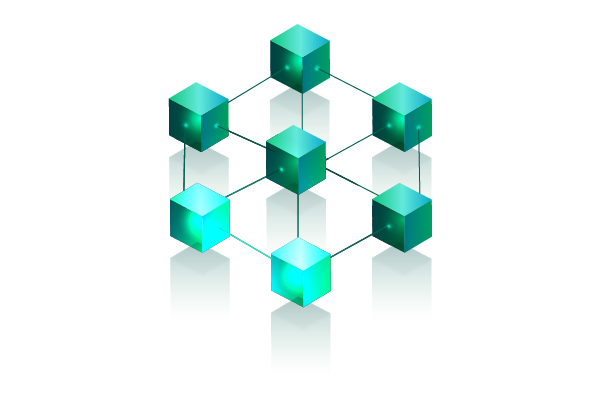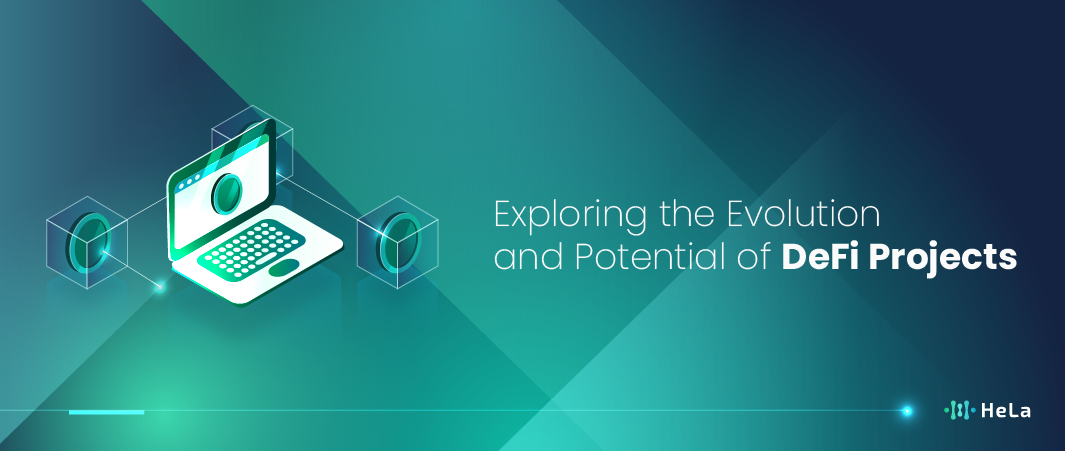It should be noted that the DeFi space (decentralized finance) has undergone a thorough makeover, redefining how the traditional finance landscape works. Propelled by blockchain technology, it was DeFi that took the lead among technological innovations, in effect opening a new chapter in decentralized, permissionless, and open financial services. This paradigm shift marks a transition from the long standing financial sector that has been customary with centralized structures, which enable users to enjoy power over their assets and financial activities.
The rise of DeFi projects has brought financial services to the masses, as this decentralization mechanism has removed geographical and social barriers and the institutions that previously kept people from accessing financial services. Through the use of smart contracts and decentralized applications (DApps), individuals can now make use of a variety of financial services, including lending, borrowing, trading, and asset management, without the involvement of intermediaries. Decentralization is not the only thing that fosters the inclination toward financial inclusion; it also reduces the dependence on conventional banking systems, which are characterized by inefficiency, a lack of transparency, and exclusionary practices.
The Rise of DeFi

Ethereum, created as a game changer blockchain platform in 2015, introduced smart contracts, which resulted in tremendous popularity for many DeFi projects. Such smart contracts provide developers with the opportunity to create decentralized apps (DApps) that run on Ethereum’s blockchain network as opposed to using intermediaries or centralized control. This technical discovery has served as a cornerstone for many financial services, including a variety of operations such as lending, borrowing, trading, and asset management that are conducted autonomously.
The integration of smart contracts provided the fintech industry with a new stage, offering developers an opportunity to automate complex finance operations and create trustless and permissionless protocols. This signifies a revolutionary innovation in traditional finance, where intermediaries like banks, exchanges, and clearinghouses have a central role in the settlement of transactions and risk management. By removing these intermediaries and binding them to the code, DeFi projects provide users with higher levels of transparency, efficiency, and security for their financial interactions.
To begin with, DeFi was first applied by cryptocurrency enthusiasts and early adopters who wanted to transform the whole industry through it, making sure that all people had equal rights to finance. One of the first to engage in these activities were the regular users who experimented with decentralized exchanges (DEXs), lending platforms, and yield farms, testing the waters of borderless finance and decentralized governance. But with the passage of time and as the DeFi protocols matured and began to have a real impact on the ground, their appeal started to transcend the crypto community, reaching a wider audience of institutional investors, traders, and mainstream users searching for alternatives to traditional banking and investing.
The increasing attention of institutional players and individual users to DeFi could partly stem from various factors. First, the emergence of stablecoins based on fiat currencies, also referred to as cryptocurrencies, has provided better liquidity and stability to the DeFi ecosystem. Stablecoins create a trusted and well-known portal for users who want to take advantage of DeFi without opening their positions to the volatile nature of the market. We have traditional cryptocurrencies like Bitcoin and Ethereum.
Secondly, one of the most fundamental changes brought about by the emergence of user-friendly DeFi interfaces and platforms is that they remove the barriers to entry for non-technical users, making it easy for people to deal with DeFi protocols and services. Onboarding process enhancements, intuitive interfaces, and educational materials de-mystify DeFi for beginners, therefore creating a wider audience and participation of people in decentralized finance.
In addition, the many yield opportunities that DeFi protocols provide have the interest of investors, who are looking for higher returns in a low interest rate environment. With the use of yield farming, liquidity mining, and staking mechanisms, holders of crypto assets will gain the ability to earn passive income on their crypto assets through the provision of liquidity to DeFi protocols or by participating in governance activities. They have been widely used by investors who seek to make the most of and expand their reach in the upcoming DeFi environment.
Key Components of DeFi Projects

The extensive financial technology (FinTech) ecosystem incorporates a broad range of sophisticated protocols and services that are transforming the very concept of finance. Blockchain is the base technology upon which DeFi projects are built, which hand over a greater level of authority to the users on their assets and financial operations, thereby introducing a novel era of open, borderless, and centralized financial services. In this segment, we go through the four main aspects of the DeFi project, namely, the features of DeFi project.
Decentralized Exchanges (DEXs)
DEXs remove the need for centralized exchanges, as users can trade cryptocurrencies without having to deal with intermediaries. Some examples of these are Uniswap, SushiSwap, and PancakeSwap, which use automated market making algorithms combined with liquidity pools for the execution of trading.
Through the decentralization of power and the elimination of order books as the central point of functionality, DEXs provide traders with higher liquidity, better transparency, and improved security. Moreover, DEXs empower users through financial self-determination by enabling them to remain sovereign over their assets during every stage of the trading process, thus not having to put their assets in the custody of third-party custodians
Lending and Borrowing Platforms
The DeFi lending platforms enable users to lend their assets to others and earn interest or borrow the assets using their holdings as collateral. These types come with platforms like Compound, Aave, and MakerDAO where one can borrow and lend without necessarily going to the traditional banks.
The accords exploit smart contracts that mechanize the lending and borrowing processes, therefore creating an effortless and transparent platform for interaction between borrowers and lenders. Without intermediaries and through the use of algorithmic risk assessment, the DeFi lending platforms enable borrowers to access more accessible and cheap credit options, thus letting the lenders offer high returns on their assets.
Yield Farming and Liquidity Mining
Yield farming involves providing liquidity to DeFi protocols in exchange for rewards, typically in the form of additional tokens. Liquidity mining incentivizes users to contribute liquidity to decentralized exchanges and lending platforms, thereby enhancing market liquidity and earning rewards.
Projects like Curve Finance and Balancer offer liquidity pools where users can stake their assets to earn trading fees and governance tokens. By participating in yield farming and liquidity mining, users can optimize the returns on their assets while contributing to the growth and sustainability of DeFi ecosystems.
Also Read: 10 Best Cryptocurrency Cloud Mining Websites in 2024
Decentralized Asset Management
DeFi protocols enable users to automate asset management through decentralized autonomous organizations (DAOs) and smart contracts. Projects like Yearn. Finance and Harvest Finance offer automated yield farming strategies, allowing users to optimize returns on their assets without actively managing their portfolios.
By leveraging algorithmic trading and yield optimization strategies, decentralized asset management platforms enable users to access sophisticated investment strategies that were previously only available to institutional investors. Moreover, DAO governance structures empower users to participate in decision-making processes and shape the direction of protocol development, fostering a more inclusive and community-driven approach to asset management.
DeFi Projects Challenges and Opportunities

Although DeFi projects have numerous benefits and are steadily gaining ground, these projects have to overcome a plethora of challenges, which range from strategic planning to the implementation of solutions, to sustain their growth and scalability. Those topmost issues are the lack of scalability, security weaknesses, and regulatory ambiguity that will cause stagnation in decentralized finance (DeFi) development and ultimately challenge its mass adoption and sustainability.
Scalability has become a shaky ground in DeFi space, especially in Ethereum, which is the most popular place for DeFi development. The growing trend towards decentralized financial services has led to the Ethereum network overload phenomenon, with network congestion and excessive transaction charges. This can cause delays and extra expenses for platform users, which eventually might make DeFi protocols less efficient and secure. To avoid such scalability issues, developers seek out other viable blockchain platforms, like Binance Smart Chain and Solana. Such systems imply greater capacity and a lower transaction price, thus, establishing the groundwork for further DeFi growth.
Exploits of security vulnerabilities and flaws in smart contracts are yet another major threat to the DeFi sector, putting users’ funds at risk. Hackers and villains may use smart contract vulnerabilities to commit theft of fund monies and manipulation of the market, which can result in unimaginable losses and reputation tarnishing. To mitigate these risks, developers need to adhere to development practices that include good security implementations, comprehensive auditing, and best practices in smart contracts. Furthermore, it is essential that people are educated and aware of the issues in order to help them identify and mitigate security threats in this sphere, the DeFi space, which empowers them to protect their assets and reduce the risks.
Moreover, the regulatory loophole is another obstacle; DeFi protocols, which are decentralized and borderless, cannot be effectively regulated or solved. The emerging legal framework brings forth issues for both developers and users, affecting the stability and transparency of the legal environment. Such problems include compliance with the law and understanding of regulatory requirements.
The provision of clear and consistent regulatory guidelines is key to the smooth functioning of DeFi and also promotes stability by ensuring entities comply with legal frameworks while fostering innovation and growth in the ecosystem. Collaboration between the major stakeholders, like investors, regulators, and policymakers, is essential to developing frameworks where the rules that foster innovation and advise asset protection are put in place.
How to Evaluate a Defi Project
As the DeFi ecosystem steadily grows and broadens, it is to witness an unprecedented increase in adoption and development, driven by the merger of technologies, regulatory needs, and changes in users’ tastes. The adoption of blockchain technology may turn out to be the superior solution to DeFi projects’ critical issues, predominantly in the fields of speed, comfort, and interoperability.
Increased scalability capabilities of blockchains through layer 2 protocols and sharding techniques are likely to relieve network congestion and reduce the cost of transactions, making DeFi a more popular financial system among users. Layer two solutions, like Optimistic Rollups and zk-Rollups, externalize the computation of off-chain transactions. Thus, blockchain networks can process more transactions. Simultaneously, the security and decentralization of the network are maintained. Hence, sharding techniques define blockchains into smaller, more workable shards, which are then processed in parallel, thus enhancing the overall throughput.
With regard to the significance of interoperability protocols in the area of blockchains, they usually serve as the basis for the exchange of information and value between different ecosystems of the DeFi and separate DeFi protocols. Some examples of such projects include Polkadot, Cosmos, and interoperability bridges. By means of such activities, a user transfers into a new ecosystem, allowing for access to a wide range of DeFi services and assets across many blockchain networks.
Through implementing the connection between independent blockchain ecosystems, interoperability protocols promote layerable technologies and the circulation of inventions in the space of decentralized finance, permitting developers to rely on the strengths of different blockchain platforms and build more sophisticated and cohesive financial applications.
Also Read: 10 Best Crypto Exchanges and Apps to Know in 2024
Decentralized identification systems can be considered an illustration of innovative elements for the DeFi ecosystem by providing classy services such as identity verification, authentication, and privacy. Decentralized identity platforms are based on blockchain technology, and they offer users self-sovereign solutions, empowering them to own and manage their personal information without exploiting centralized authorities. Suggesting that these decentralized identity systems be incorporated into DeFi apps should be viewed by users as a way to provide them with a unique chance to be able to interact with financial services and to be able to take advantage of smart contracts without compromising their identity and privacy.
Besides, having regulatory clearance and compliance mechanisms as long as the DeFi projects endure and reach their clients is another factor in their long-term sustainability and credibility. Looking for clear and well-defined regulatory rules will only bring definite benefits for installers, capital infuses, and ordinary users, which will improve confidence and trust in the DeFi environment. The use of standard compliant solutions, e.g., decentralized compliance protocols and regulatory sandboxes, helps DeFi projects meet the regulatory requirements as well as keep to the underlying ethos of decentralization and privacy.
Conclusion
Decentralized finance (DeFi) is the front line of a new financial revolution, which has changed the perception of banking, lending, and investing as we have always known them. As opposed to these obstacles like scalability, security vulnerabilities, and regulatory uncertainties, DeFi still enjoys growth at an exponential rate. Through the use of blockchain technology that allows for applications with openness, transparency, interconnectivity, and financial services that are open to all, DeFi projects help individuals take financial control and become more financially included and self-reliant.
Peering into the future, DeFi harbors a lot of potential for growth as a result of blockchain technical improvement, regularity clarification, and user acceptance. As the user-friendly, scalable, and secure DeFi protocols emerge into the market, they will definitely attract people from two categories that are the normal users and investors from traditional finance searching for new options. Interestingly, the rise in applications and use cases like decentralized derivatives, insurance, and prediction markets is going to make DeFi more popular and robust.
Disclaimer: The information provided by HeLa Labs in this article is intended for general informational purposes and does not reflect the company’s opinion. It is not intended as investment advice or a recommendation. Readers are strongly advised to conduct their own thorough research and consult with a qualified financial advisor before making any financial decisions.

In the role of a Hela writer, I weave stories that reveal the core of this revolutionary Layer-1 solution. Created in partnership with accomplished engineers, scientists, and A*STAR IHPC, Hela is tailored for real-world use
-
Alifia Berizkyhttps://helalabs.com/blog/author/alifiabm/
-
Alifia Berizkyhttps://helalabs.com/blog/author/alifiabm/
-
Alifia Berizkyhttps://helalabs.com/blog/author/alifiabm/
-
Alifia Berizkyhttps://helalabs.com/blog/author/alifiabm/

